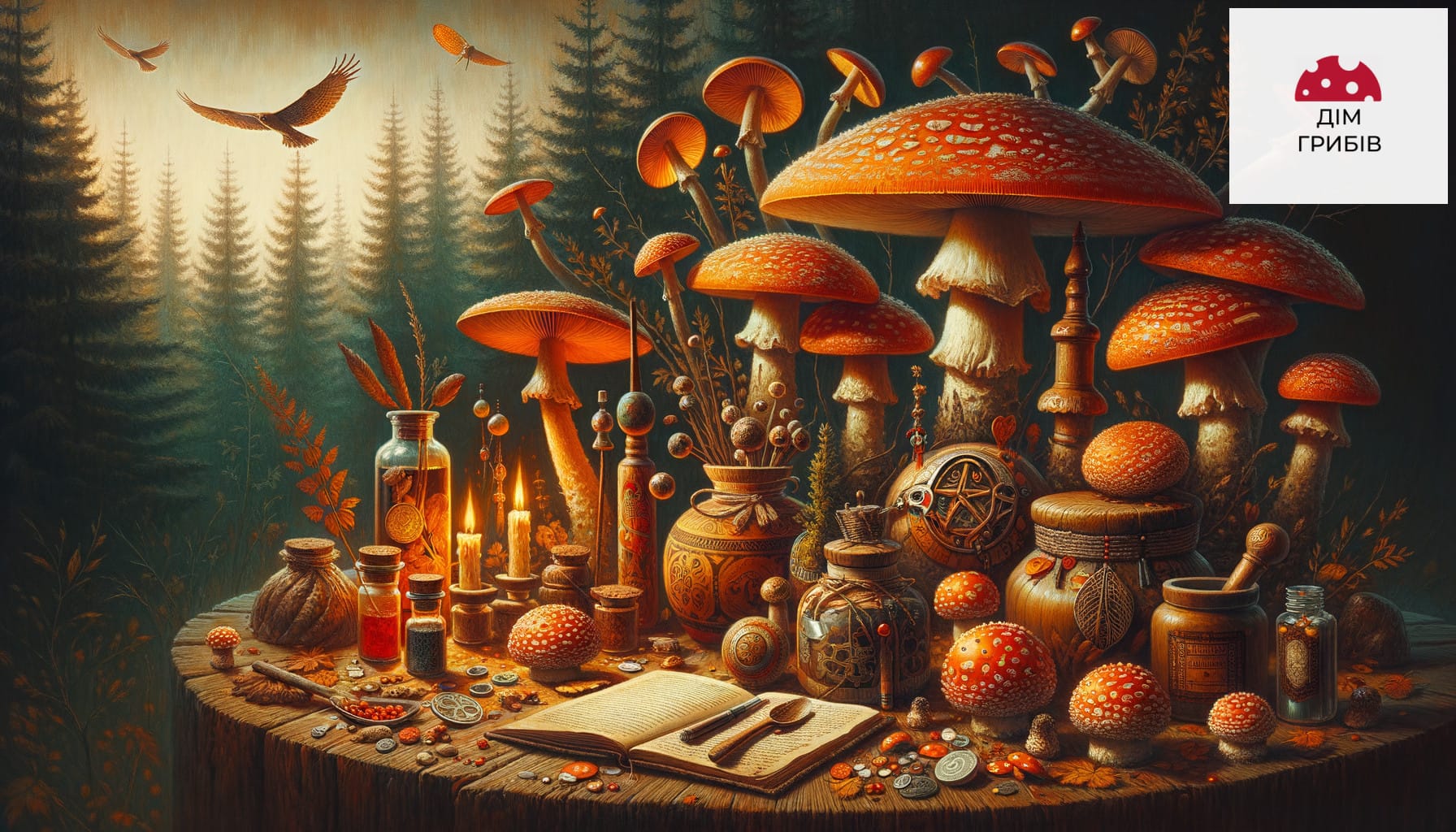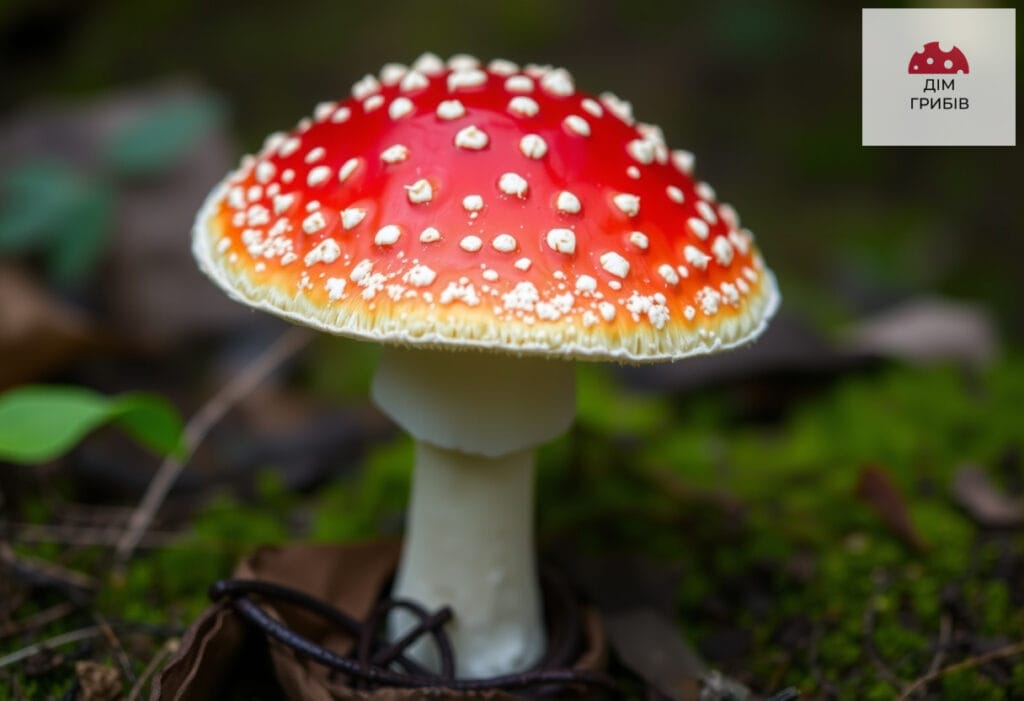Rites of the fly agaric: Discover the secrets that amaze the imagination!

Fly Agaric Rituals: A Lost Art and Their Role in the Modern World
Fly agaric rituals in Ukraine have deep roots in folk culture and traditions. Fly agaric, especially the red fly agaric (Amanita muscaria), has long been associated with magical practices, ceremonialism, and various rituals. In this article, we will take a detailed look at fly agaric rituals, their significance, use in Ukrainian culture, and modern research and practices.
Historical context: You can't come here without a fly agaric?
The history of the use of fly agarics in rituals dates back to ancient times. In the pre-Christian period, they were often used as psychoactive agents in rituals aimed at providing a connection with the divine. Fly agarics have attracted the interest of researchers due to their ability to induce streams of consciousness and changes in the perception of reality. Based on archaeological findings, it can be stated that:
- Used in tribal rituals.
- They were kept in sacred places, such as burial mounds and temples.
- They were mentioned in oral traditions and folk tales.
Types of fly agaric and their charisma
Amanitas are not only a symbol of magic, but also contain several species, each of which is distinguished by its specific properties:
- Red fly agaric (Amanita muscaria): The most famous species used in rituals. Its bright color makes it easily recognizable.
- Panther fly agaric (Amanita pantherina): Less well known, but also used in some rituals.
- Yellow fly agaric (Amanita flavoconia): It is used less often, but has its own symbolic meanings.
Cultural aspects of fly agaric rituals
Amanita rituals have different meanings depending on the region of Ukraine. In Ukraine, this mushroom is often associated with:
- Traditional holidays – many rituals are associated with annual cycles.
- Purification rituals - fly agaric was used in rituals as a means of getting rid of negativity.
- Initiation ceremonies are age-related transitions, such as initiation into a new status.
Modern practices and their integration
Although traditional practices have disappeared, interest in amanitas is growing in modern society. Various groups are trying to revive ancient rituals in the context of new cultural trends and knowledge. Due to the growing popularity of cultures that use psychoactive mushrooms, the following types of practices are emerging:
- Seminars on psychedelics.
- Groups to discuss experiences using fly agarics.
- Research into the effects of fly agarics on the psyche is actively being conducted in scientific circles.
Scientific study of fly agarics
Today's research on fly agarics focuses on their use in the context of psychology and medicine. Here are some key statistics:
| Research | Year | Result |
|---|---|---|
| Research conducted in 2020 | 2020 | Certain components of fly agaric may help treat depression. |
| Journal of Psychedelic Studies | 2021 | By 40%, participants reported positive changes in mental state. |
| Fly agaric rituals in several regions | Modernity | Recorded as a successful form of treatment. |
Fly agaric rituals in practice today
Today, some people integrate fly agarics into their personal or spiritual practices. Here are some examples of uses:
- Rituals in meditation: using fly agarics to achieve a deep state of meditation.
- Therapy sessions: Some therapists use fly agarics as a means to uncover personal issues in patients.
- Creative practices: Artists and writers use fly agarics for inspiration.
Ethical aspects of using fly agarics
The proper use of fly agarics in rituals raises many ethical questions. Here are some key points to consider:
- Availability and legality: In many countries, laws regarding psychoactive substances are strict.
- Careful attitude towards nature: It is important not to deplete nature, because fly agarics do not grow so quickly.
- Awareness: Consumers must be aware of potential risks and benefits.
Case: Folk customs in the Kyiv region
One of the interesting examples of the use of fly agarics in rituals is the traditions of the Kyiv region. Here, the customs of rituals performed during various holidays, such as:
- Ivan Kupala Day - using fly agarics to cleanse the soul.
- Harvest festival - rituals with fly agarics involve fruits and rye.
- Other religious rites are associated with the rhythm of village life.
Modern fly agaric rituals: From classics to novelties
Despite new trends, many old traditions have survived and live with dignity in the modern world. In Ukraine, thanks to the efforts of ethnographers and cultural scientists, new groups are emerging that seek to revive old practices:
- Annual mushroom festivals, where people prepare dishes made from fly agarics together.
- Workshops that teach how to safely consume and process fly agarics.
- Exhibitions dedicated to the culture of mushroom use and mushroom hunting.
Fly agarics in art and literature
Amanita rituals have also found their way into art and literature. A large number of books, paintings, and even films explore this theme, emphasizing the importance of cultural heritage and identity:
- Literature: Many Ukrainian writers, such as Taras Shevchenko, were noted for their works that were related to the depiction of ritual art.
- Art: Artists create paintings depicting mushroom rituals, usually decorating them with symbolism.
Resources for diving into the topic
If you want to learn more about fly agaric rituals, I recommend paying attention to the following resources:
- Nature: The role of psychedelics in the treatment of depression
- Our own blog about mushroom rituals
You can also learn about folk culture and customs to delve even deeper into the topic. in our shop House of Mushrooms.
As forgotten fly agaric rituals regain popularity, we should remember their deep historical roots and cultural value, and be careful and responsible in their use today. Understanding and respecting traditions is the key to preserving a cultural heritage that unites generations and reflects the richness of Ukrainian history.

